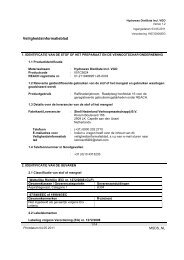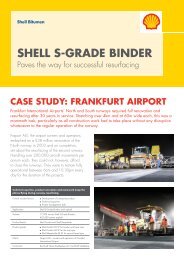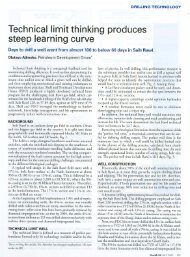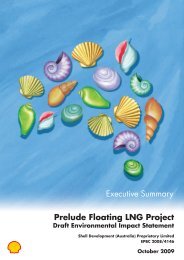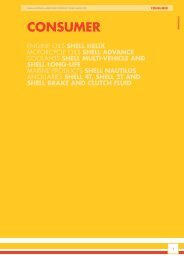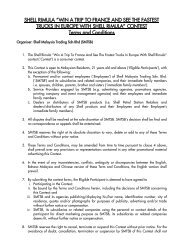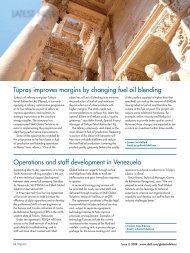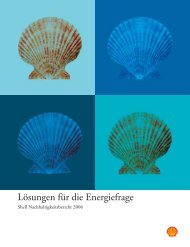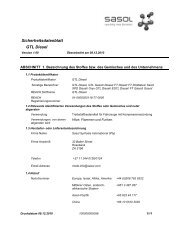Health One - Shell
Health One - Shell
Health One - Shell
You also want an ePaper? Increase the reach of your titles
YUMPU automatically turns print PDFs into web optimized ePapers that Google loves.
BIODIVERSITY CONSERVATION<br />
<strong>Shell</strong> recognises the fact that biodiversity - the extraordinary variety of life on earth - is fundamental and<br />
crucial to human existence. This is the reason why the company is committed to operating responsibly and<br />
is constantly looking for ways to integrate biodiversity considerations into its work around the world - from<br />
watershed conservation to formulating products that minimise harm to the environment.<br />
Saving the La Mesa Watershed<br />
Strongly committed to environmental preservation as<br />
defined in its Business Principles, <strong>Shell</strong> intensified its<br />
support for the Save the La Mesa Watershed project<br />
with the ABS-CBN Foundation Inc. (Bantay Kalikasan),<br />
which is meant to rehabilitate, protect, and develop<br />
the watershed that provides Metro Manila its water.<br />
Aside from the adoption of 10 hectares of the La Mesa<br />
Forest and 25,200 square metres of the <strong>Shell</strong> Flower<br />
Terraces in the La Mesa Ecopark, <strong>Shell</strong> supported the<br />
coin bank drive through the donation of 10,000<br />
cans used to raise funds for the environmental<br />
programmes to save the La Mesa Watershed.<br />
The La Mesa Watershed has an area of 2,700 hectares covering the cities of Quezon, Marikina and<br />
Caloocan, and the province of Rizal. It is one of three (3) watersheds providing water to 12 million residents<br />
in Metro Manila. La Mesa currently has seventy-two (72) indigenous Filipino species and a gene bank<br />
for endangered species.<br />
Saving the Philippine Eagle<br />
Pilipinas <strong>Shell</strong> Petroleum Corporation (PSPC) and the Philippine Eagle<br />
Foundation (PEF) are in a continuous crusade to save the Philippine Eagle<br />
and its habitat. PSPC reiterated its commitment when it adopted another<br />
eagle, Magiting, a sub-adult male Philippine Eagle turned over to PEF<br />
in September 2002. PSPC joins a select group of eagle supporters who<br />
have been contributing annually to the Pag-Asa Support Fund since 1992.<br />
The fund fuels research and conservation breeding work needed to bring<br />
back the dwindling population of the eagles in the country.<br />
PSPC and PEF started its partnership in 1987 to save the endangered<br />
national bird from extinction. A major milestone was achieved with the<br />
birth of Pag-Asa (Hope) - the first Philippine Eagle bred and hatched in<br />
captivity. The bird was bred using cooperative artificial insemination<br />
techniques while hatching was achieved by combining natural and artifical<br />
incubation.<br />
The Philippine Eagle is the barometer of the health of the rainforest<br />
ecosystem in the country. Their conservation contributes to Sustainable<br />
Development (SD) and improves the quality of human life by maintaining<br />
biological diversity and environmental health.<br />
<strong>Health</strong>, Safety & Environment Report 2006<br />
23




